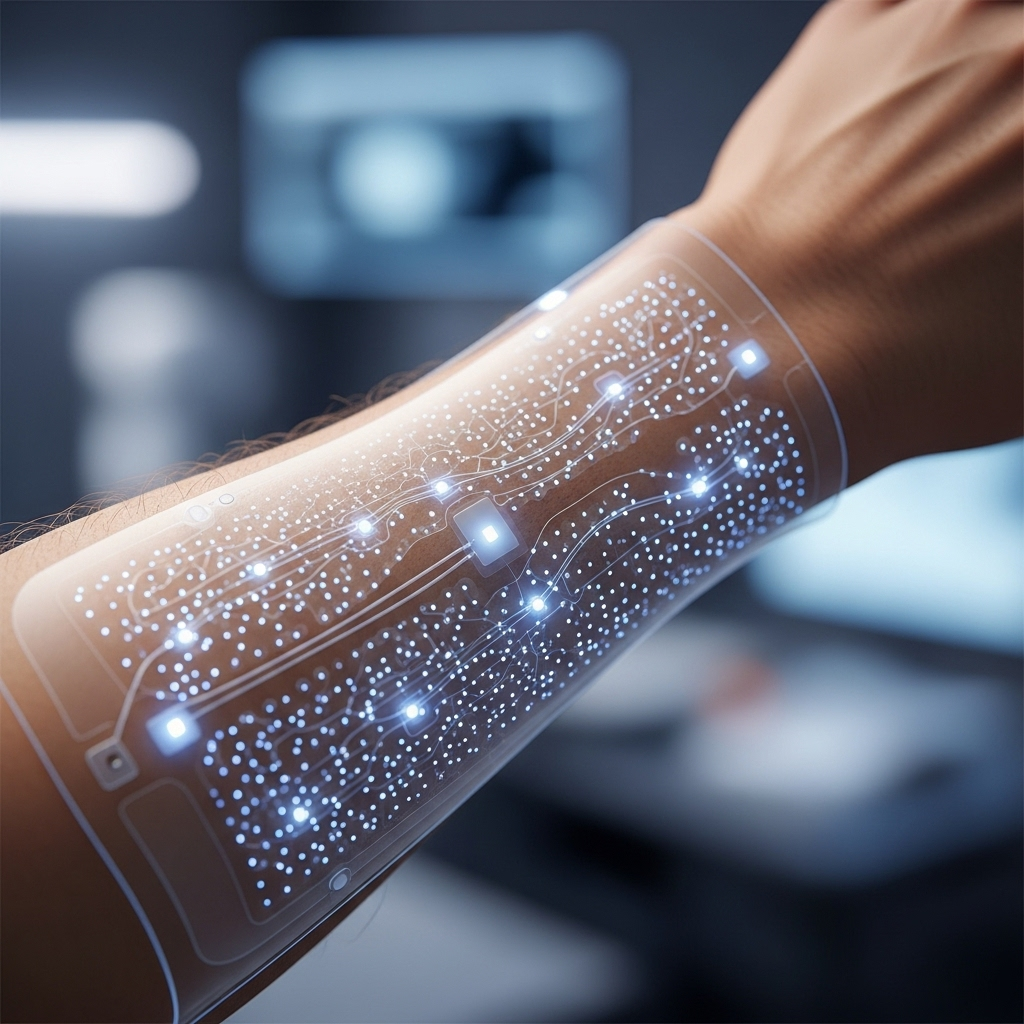The concept of electronic skin (e-skin)—a flexible, stretchable, and sensor-integrated material that mimics the properties of human skin—is rapidly evolving, bridging the gap between biology and technology. With the ability to sense touch, temperature, pressure, and even chemical signals, electronic skin is poised to transform industries ranging from healthcare to robotics and beyond.
Recent Advancements in Electronic Skin Technology
- Flexible and Stretchable Materials Traditional electronic devices are rigid and brittle, making them unsuitable for integration with biological tissues. Recent breakthroughs in nanomaterials, conductive polymers, and graphene have enabled the creation of ultra-thin, stretchable e-skins that conform seamlessly to human skin or robotic surfaces.
- Self-Healing Properties Inspired by human skin’s natural ability to repair itself, researchers are developing e-skins with self-healing polymers. These materials can restore conductivity and functionality after being scratched or torn, extending the lifespan of the devices and reducing waste.
- Enhanced Sensory Capabilities Modern e-skins go beyond touch sensitivity. They can now detect temperature fluctuations, humidity, strain, and even biochemical signals such as glucose or sweat composition. This opens up possibilities for continuous health monitoring and personalized medicine.
- Energy Harvesting Features To overcome the limitations of batteries, new designs incorporate energy-harvesting technologies such as piezoelectric nanogenerators or solar cells. These innovations allow e-skin to power itself from body movement or ambient light, ensuring sustainable and uninterrupted performance.
- Integration with Artificial Intelligence The fusion of e-skin with AI algorithms enhances its ability to interpret sensory data. For instance, robotic hands equipped with e-skin can use machine learning to recognize object textures, weight, and fragility, enabling safer and more precise interactions.
Emerging Trends Shaping the Future
- Wearable Healthcare Devices E-skin is at the forefront of remote health monitoring. Future devices could continuously track vital signs, monitor wounds, or detect early signs of disease, transmitting real-time data to healthcare providers for proactive interventions.
- Human–Machine Interfaces E-skin is redefining how humans interact with machines. From gesture-controlled devices to prosthetics that restore a sense of touch, the technology is unlocking more natural and immersive experiences.
- Robotics and Soft Machines Robots equipped with e-skin gain human-like tactile perception, enabling them to perform delicate tasks such as assisting in surgeries, handling fragile goods, or providing caregiving support in elderly care.
- Virtual and Augmented Reality By integrating e-skin into VR/AR systems, users could experience haptic feedback that simulates touch, texture, and temperature. This could revolutionize training simulations, gaming, and immersive communication.
- Sustainable and Biodegradable E-Skin As sustainability becomes a global priority, researchers are working on biodegradable e-skin materials that minimize electronic waste. Such innovations align with circular economy principles, making technology more eco-friendly.
Challenges Ahead
Despite impressive progress, several challenges remain before e-skin reaches large-scale adoption:
- Ensuring durability under real-world conditions.
- Maintaining low production costs for mass deployment.
- Balancing high sensitivity with power efficiency.
- Addressing ethical and privacy concerns in healthcare applications.
Conclusion
Electronic skin technology is advancing at an unprecedented pace, driven by innovations in materials science, nanotechnology, and artificial intelligence. As it matures, e-skin has the potential to reshape how humans interact with technology, enhance healthcare outcomes, and expand the capabilities of robotics and wearable devices. With continuous research and industry collaboration, e-skin will move from futuristic concept to practical reality—ushering in a new era of human–technology integration.


